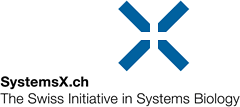Exploring Response Surfaces and Synergistic Interactions of Antibiotic Combination Treatment for Neisseria Gonorrhoeae
Increasing antibiotic resistance is a major public health problem for the treatment of sexually transmitted Neisseria gonorrhoeae infections in Switzerland and worldwide. New antibiotics and strategies for their use are needed to help limit the spread of antimicrobial resistance. Antibiotic combination regimens are now empirically recommended. To better understand their potential impact, we need more information about their pharmacodynamical effects and influence on the growth of N. gonorrhoeae.
In this IPhD project, this problem will be tackled with an interdisciplinary approach, combining infectious disease epidemiology and clinical microbiology. The laboratory experiments collecting phenotypical and genomic data about the effect of single antibiotics on the growth of different N. gonorrhoeae isolates have already been conducted. Extensively drug-resistant clinical isolates that carry different markers of drug resistance are currently being studied in detail.
The resulting experimental data are used to fit a mathematical model to determine the pharmacodynamic function for different antibiotics. In the next step, the model will be further developed in order to predict the effects of combination antibiotic treatment based on the pharmacodynamic functions, using the concept of response surfaces. These predictions will then be experimentally verified to demonstrate their clinical efficacy.
Keywords: Neisseria gonorrhoeae, time-kill, combination treatment, pharmacodynamics
back
